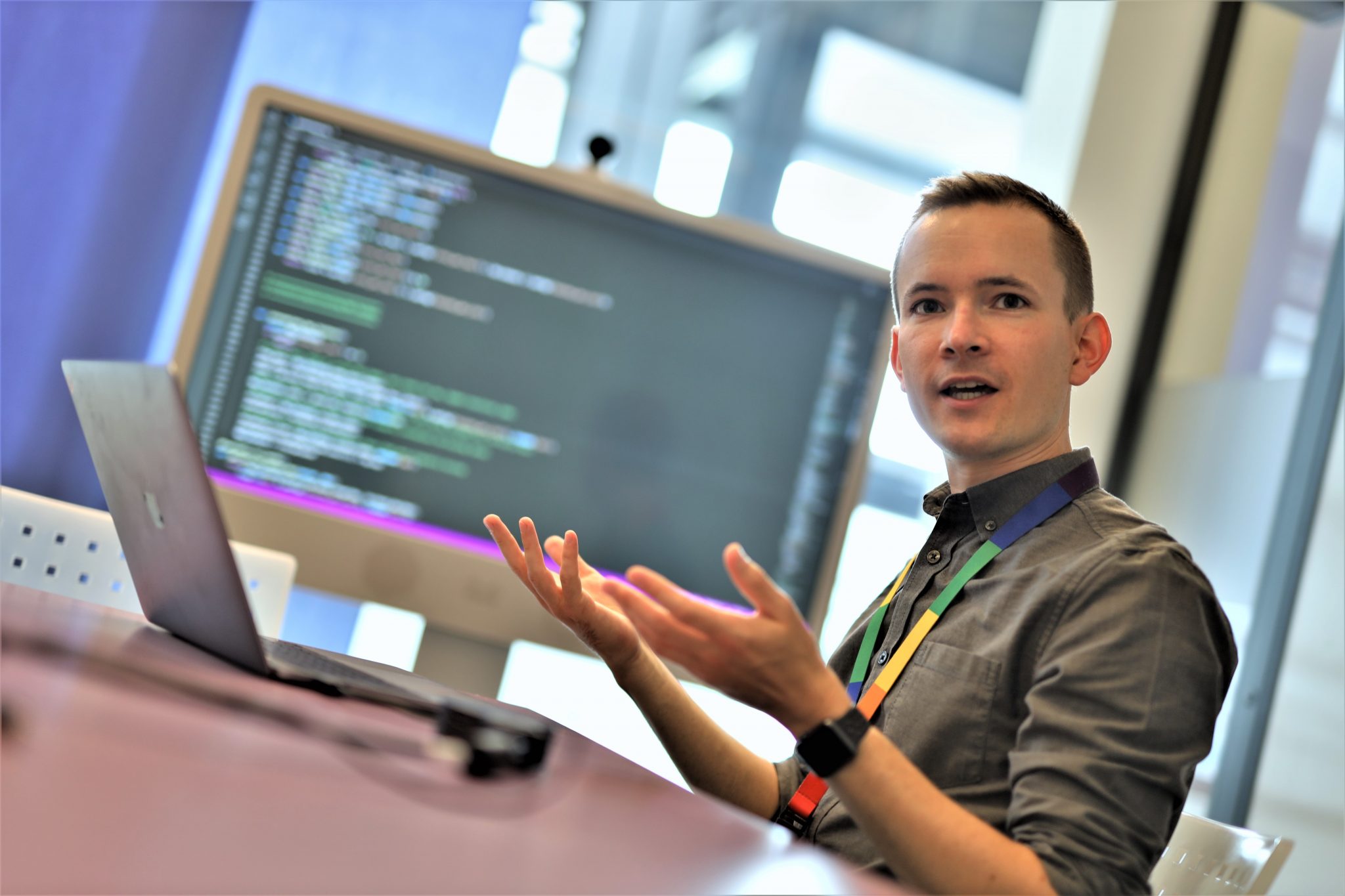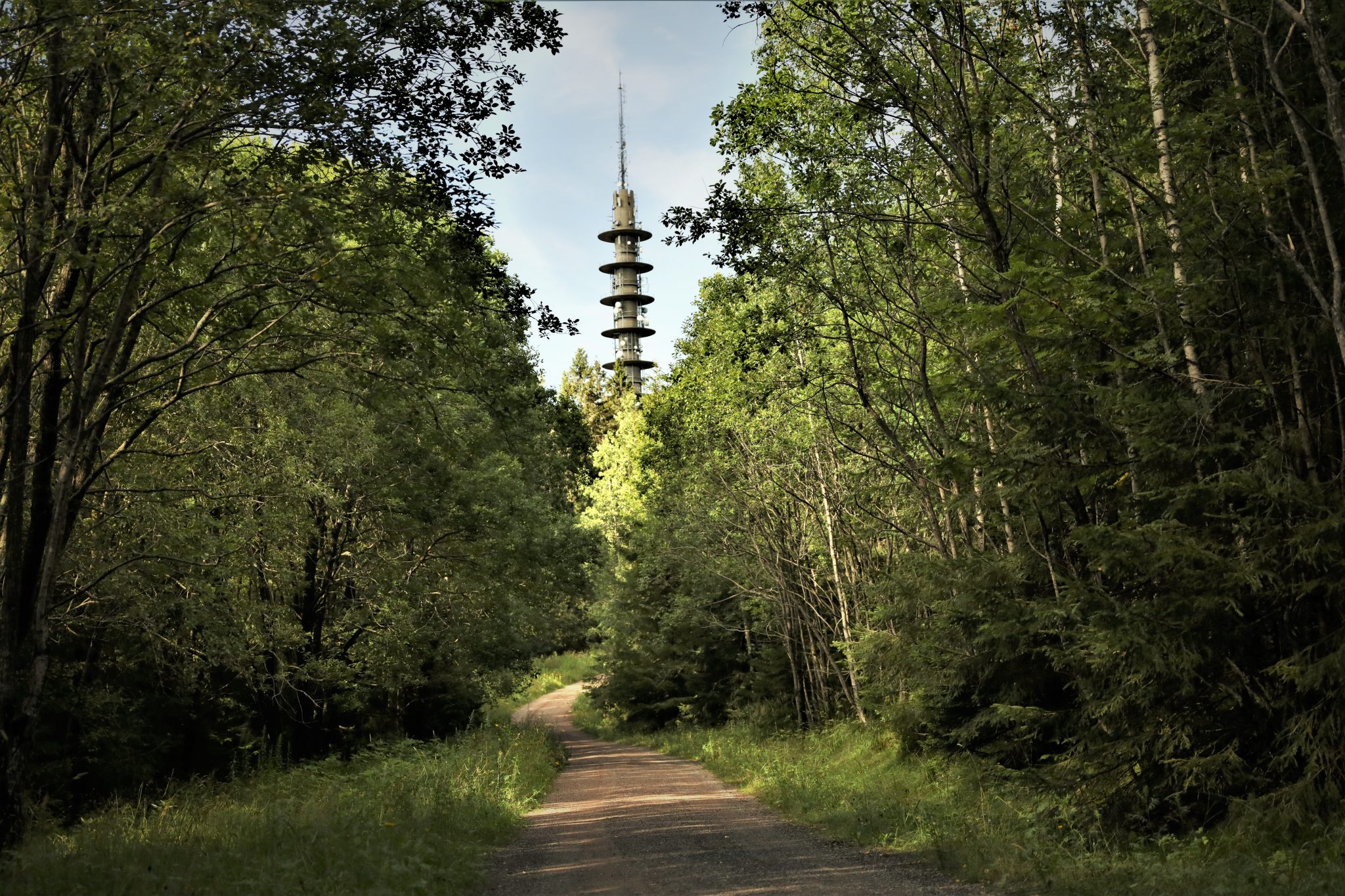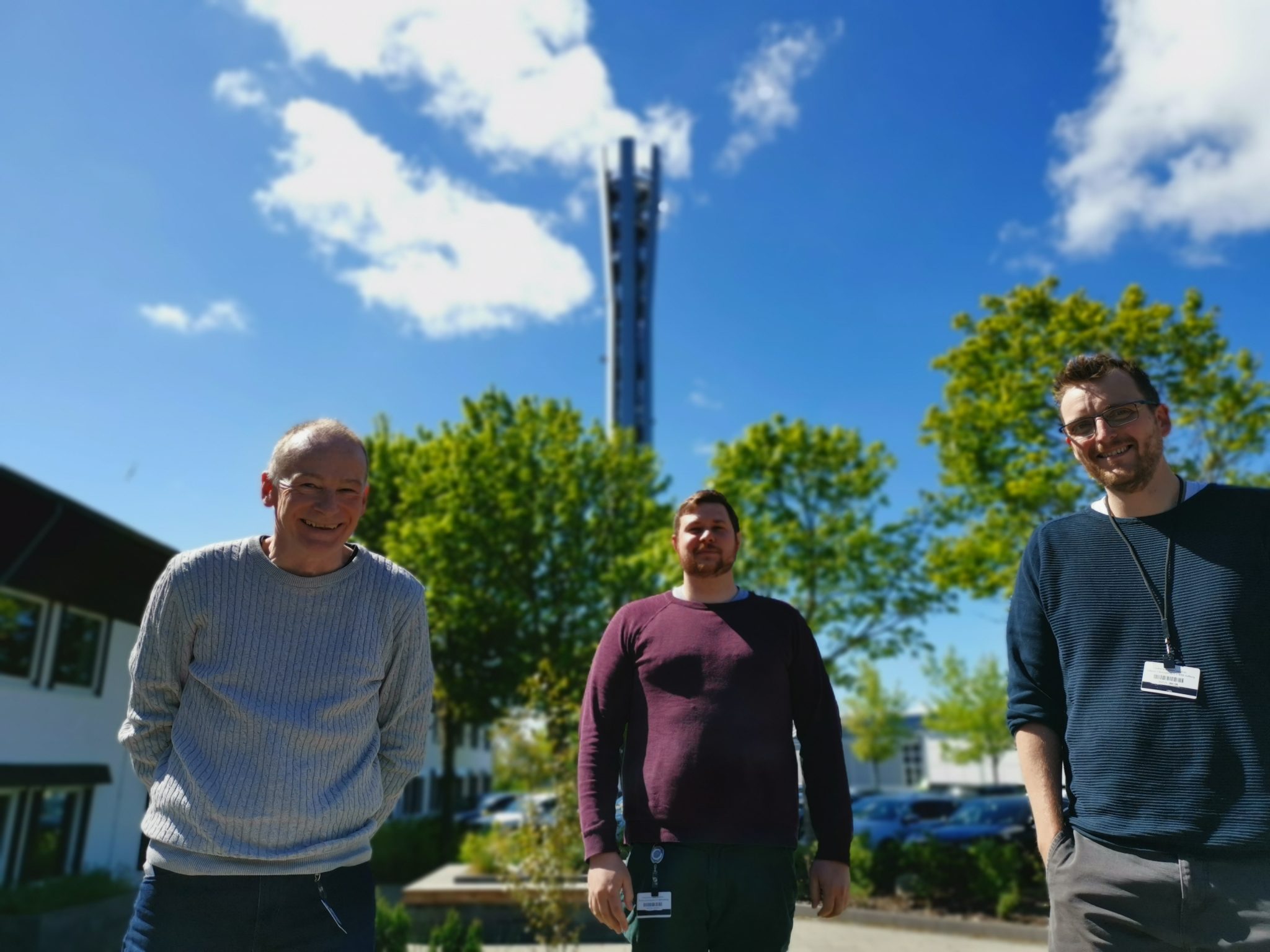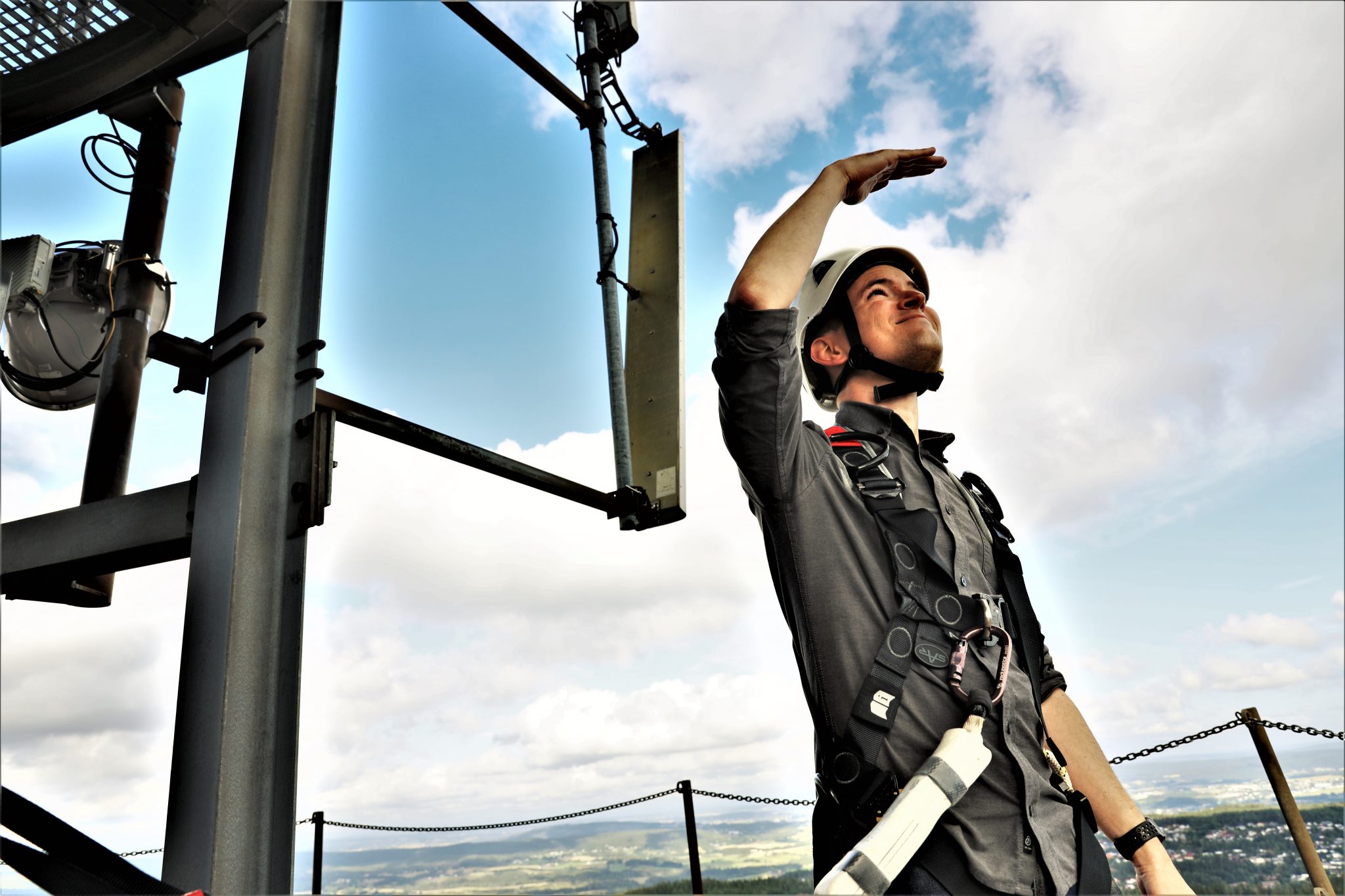
Lean, green telco machine: how AI is greening mobile networks
Safeguard
Safeguarding planet, people and data in the digital world and beyond
Safeguard means that Telenor constantly raises the bar for the safety, security and privacy for our customers, partners and employees, as well as the health of our planet to drive positive, long-term change.
Telenor’s researchers are developing an algorithm that will help reduce the environmental impact of Telenor’s mobile network operations. Here’s how.
“And the beauty of the solution is that it’s not magic, it’s code and data,” says Vegard Edvardsen, Research Scientist at Telenor Research, while some hundred lines of computer code flash before his eyes.
The tiny, detailed lines on his screen are essentially the flesh and bones of an algorithm that will make Telenor’s network operations more eco-friendly.
“We call this project ‘Green Radio’. We’re using data analytics and AI methods to create an algorithm that will enable mobile networks to be more efficient, which will save energy and as a result decrease the CO2 emissions,” he explains.

Enormous energy-saving potential
According to estimates reported by researchers at Sweden’s Royal Institute of Technology (KTH), communication networks account for more than one percent of all energy consumption worldwide. That number alone explains why green radio has been a top priority for Telenor Research over the last year.
“To explain how the project works, I will have to start with the absolute essence of a telecom operator’s business. The mobile sites,” says Edvardsen.
“When building a mobile site, you divide each site into three different sectors. Mounted antennas provide coverage for each sector. Over time, the users’ data consumption grows while we also tend to get more users in our networks. The more users positioned in the same sector, the less bandwidth each user gets. Therefore, we sometimes need to upgrade the sites by installing more antennas, which means that the sites consume more energy.”
As Edvardsen explains, however, the more a mobile site is upgraded, the larger the potential for power saving is.
“It’s important to remember that the consumers’ usage isn’t constant. For instance, at night, when people are asleep, you don’t need the mobile sites to run at full capacity. Similarly, full capacity is not necessary in residential areas when people are away at work or gone for the weekends. In the same way, it’s unnecessary in business districts during the evenings. The list goes on, but it all boils down to this: we don’t need our mobile sites to run at full capacity at all times.”
Another green read for you: In Myanmar, diesel’s days are numbered as Telenor turns to solar energy

The Danish connection
In Denmark, Telenor had for years tried to exploit this unresolved energy-saving potential. At a certain point, they faced a problem they didn’t manage to solve on their own, as Mads Sørensen, Business Architect at Telenor Denmark, explains:
“We had implemented a power-saving feature in our network, which, in short, was supposed to adjust the power usage in all of our 12,000 sectors based on capacity demand. Unfortunately, the feature did not manage to adjust the power saving automatically. To manually set an activation for each of the 12,000 sectors would be impossible considering the time consumption. Setting a fixed power-saving mode for all the sectors would have to be done very conservatively, meaning the loss of huge power saving potential,” he says.
It became apparent to Sørensen and his colleagues that in order to harvest the full potential of this feature, they needed to implement some sort of automation. That’s when Sørensen reached out to Telenor Research.
“As we started digging into the issue, we realised that historical data and analytics could be used to adapt power-saving windows individually for each sector depending on what the specific traffic profile looked like,” Edvardsen says.
With that, the seed that would grow into Green Radio had been sown.
In Denmark, Telenor has created an IoT solution to monitor defibrillators 24 hours a day

Local trials, global impact
The first step for Edvardsen and Sørensen was to merge resources from Telenor Research and Telenor Denmark with one aim: to develop an algorithm that could automatically configure the network for the coming week’s expected traffic.
“We’ve seen very promising results so far,” says Edvardsen, who explains how the pilot worked.
“We ran a trial project in several areas of the country for five weeks and saw that we can double or even triple the time spent in power-saving mode compared to the previous scenario of only switching off at night. If we manage to implement this permanently in our networks, it could mean an annual saving of hundreds of tons of CO2 emissions per year in Denmark alone. So imagine if we deploy something like this across all of our operations. That would really make an impact.”
No wonder the AI scientist describes Green Radio as proof of the power of data.
“Using data and algorithms, we can improve our business processes in a way that would otherwise be impossible. I hope stories like ours can help demystify what it actually means to be data-driven. AI, data science, and machine learning aren’t magic. It all comes down to data, code, and the right use-cases.”

Carbon-neutral by 2030
Telenor Group’s greenhouse gas emissions in 2019 are estimated to be a total of around 1.2 million tonnes of CO2.
“Our ambition is to have carbon-neutral business operations in our Nordic markets and a 50 per cent emission reduction in our Asian markets by 2030. Energy efficiency measures in our network operations is one of our key focus areas in reaching our goals,” says Anne Kvam, SVP Climate Goal Project at Telenor Group.
The Green Radio test demonstrates potential efficiency gains in the network energy consumption of about 2.5 per cent. This represents an annual reduction of 700 tonnes of CO2 in carbon emissions.
“In Denmark, this could be compared to a full year driving of about 250 standard cars, diesel or petrol, with an average of 15,000 kilometers per car per year,” Kvam adds.
Contact
Stian Kristoffer Sande
Communication Manager
Telenor Group